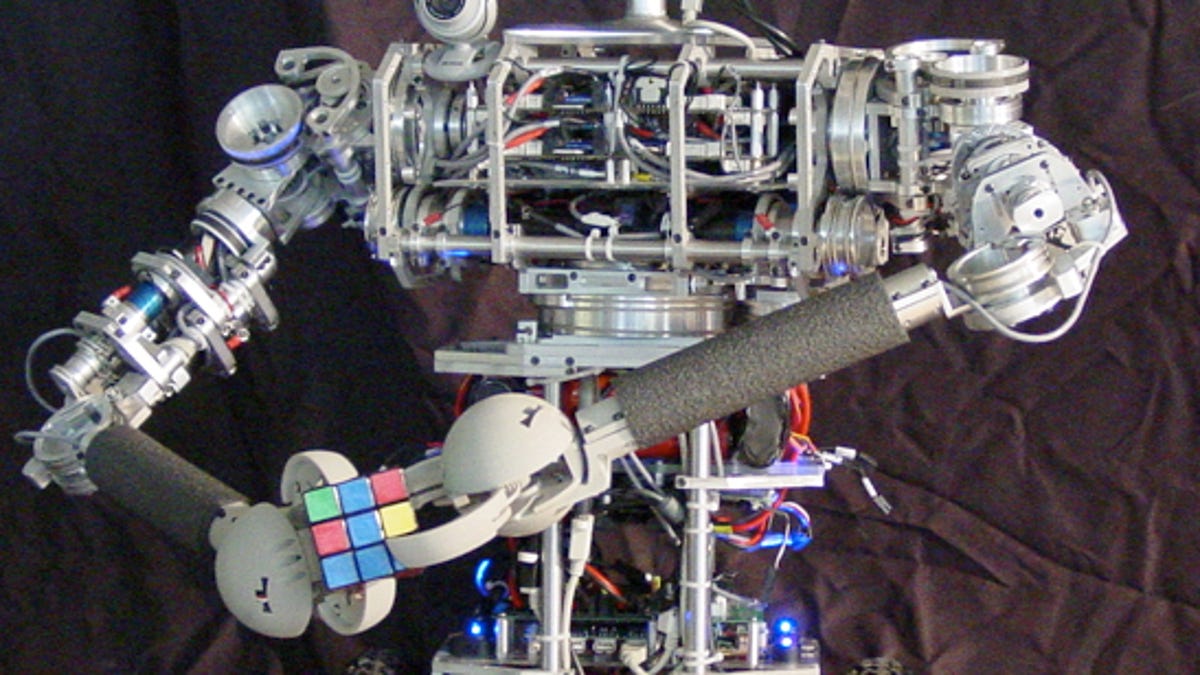Stroke patient gets by with a little help from a bot
The child-size unit, named uBot-5, uses arms and a computer screen through which therapists can interact with the patient.

Turning to robots for speech and physical therapy may not be everyone's idea of high-quality, personalized health care. But for stroke patients -- particularly those in rural, isolated areas -- therapists can be difficult and expensive to come by, and rehabilitation can be elusive.
So a speech language pathologist at the University of Massachusetts Amherst is studying the interactions of stroke patients with the uBot-5, a child-size humanoid robot with arms and a computer screen through which therapists can interact with people. And for at least one stroke patient, the bot appears to be doing a stand-up job.
"It's clear from our study of a 72-year-old male stroke client that a personal humanoid robot can help people recover by delivering therapy such as word-retrieval games and arm movement tasks in an enjoyable and engaging way," study leader Yu-kyong Choe said in a school news release. Her case study appears in the current issue of the journal Aphasiology.
The patient, who was suffering from a physical disability on one side as well as aphasia -- a common disorder in stroke patients that can impair spoken and written language -- took "robot-mediated" speech and physical therapy over the course of several weeks, during which time he made "notable gains in the frequency and range of the upper-limb movements," as well as in verbal expression, according to the authors.
While any study with a sample size of one isn't going to provide enough data to celebrate, this is one of the earliest experiments using a humanoid bot to deliver speech and physical therapy to a stroke patient, and Choe says the success warrants further study.
Choe and bot expert Rod Grupen, director of the uBot-5's birthplace, UMass Amherst's Laboratory for Perceptual Robotics, are in their second year of a grant from the American Heart Association to explore the bot's ability to lead the rehabilitation process in stroke patients. They say their goal is to bring more and longer-term therapy, as well as social contact, to people recovering from strokes, of which there are an estimated 3 million in the U.S.
Intensive rehabilitation can in many instances help people almost or even fully recover from strokes, they say, but this kind of rehab is rarely available or accessible thanks to a lack of long-term treatment coverage as well as a shortage of therapists. The result? Chronic low function, which can result in depression and isolation, not to mention a further drain on health care dollars. Grupen says in the release:
In addition to improving quality of life, if we can support a client in the home so they can delay institutionalization, we can improve outcomes and make a huge impact on the cost of elder care. There are 70 million baby boomers beginning to retire now. A personal robot could save billions of dollars in elder care while letting people stay in their own homes and communities. We're hoping for a win-win where our elders live better, more independent and productive lives and our overtaxed health care resources are used more effectively.
Choe and Grupen's study is ongoing, and they are currently enrolling stroke patients.

